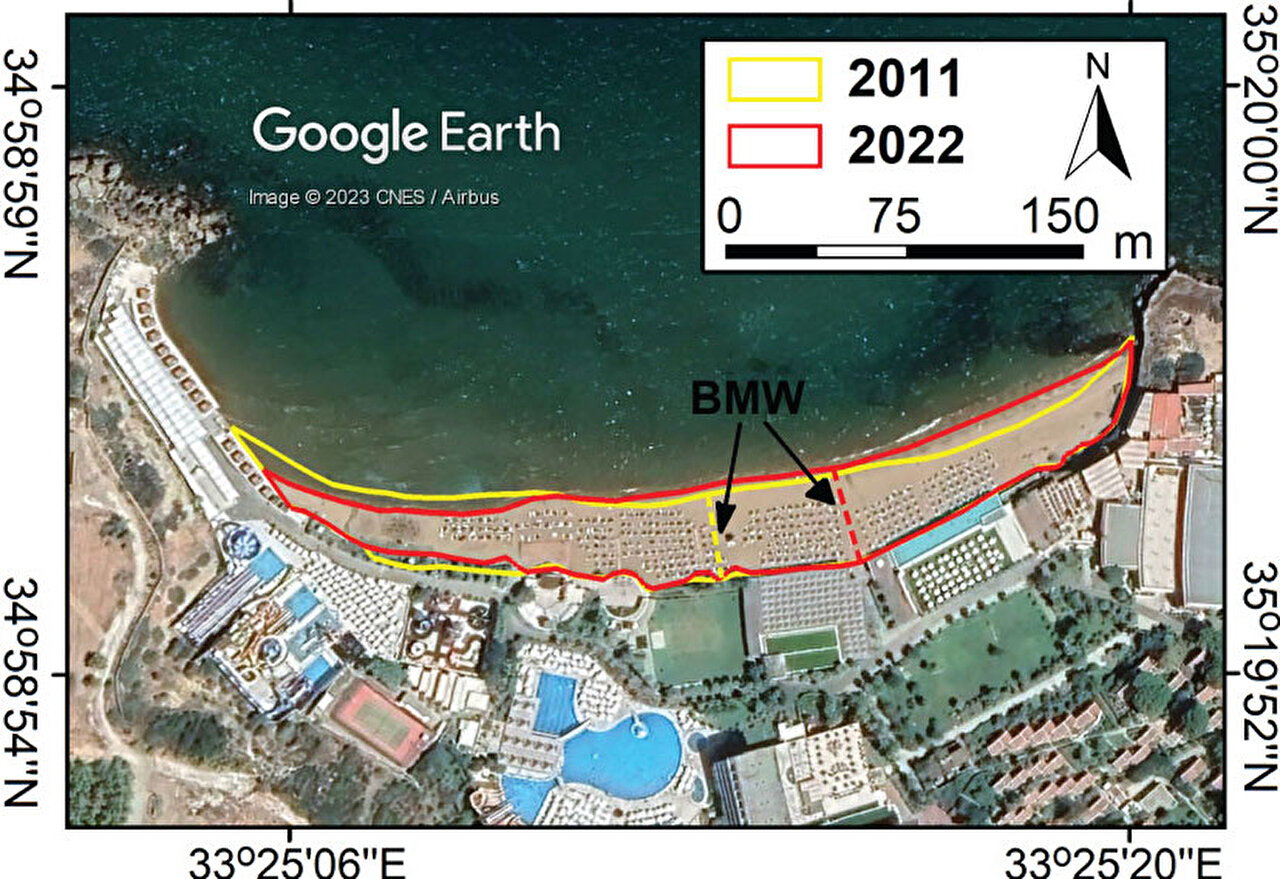Cyprus’ beaches are facing a threat from climate change, as rising sea levels and increased wave action lead to the erosion of sandy shores. Researchers from the University of the Aegean in Greece have issued a dire warning that up to 72% of the island’s beaches could disappear by 2100. Cyprus, the third largest island in the Mediterranean, has a coastline that spans 740 km.
The researchers used satellite imagery to measure the dimensions of 241 unprotected beaches and created models to predict the rise in sea levels and erosive wave action caused by storms under different climate scenarios. These models projected the rate at which the beaches would retreat in the coming decades. The loss of sediment flowing downstream in rivers to the coast, due to dams trapping sediment upstream, exacerbates these issues. As a result, there is less sand available to replenish the beaches after erosive events.
The study predicts that extreme sea level rise could increase by 60% by 2100 (up to 1.29 m above mean sea level) compared to the baseline level in 2000. The southern and western coastlines are expected to experience the most erosive action. However, it is the narrow beaches with a width of less than 50 m that are most vulnerable to erosion. The models suggest that up to 72% of these narrow beaches could permanently lose at least half of their width by the end of the century.
According to different carbon dioxide emission scenarios outlined by the Intergovernmental Panel on Climate Change (IPCC), sea levels rise as emissions increase. The researchers found that under a scenario where carbon dioxide emissions reach 650 ppm (RCP4.5), increasing to 1,500 ppm (RCP8.5) in a worst-case scenario, extreme sea level rise could triple to 2.04 m.
In addition to sea level rise, the severity and frequency of coastal storms are expected to increase. A modeled 100-year extreme storm event in 2100 could overwhelm nearly half of the beaches, particularly those on the northern coastlines. Without adequate safety measures, this could cause significant damage to natural ecosystems and human-made infrastructure.
2023-07-27 05:24:03
Article from phys.org
